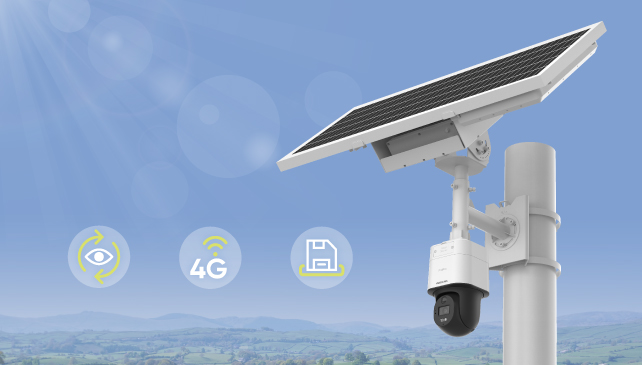

In recent years, the demand for security cameras has skyrocketed due to the increasing need for enhanced safety and surveillance. Traditional closed-circuit television (CCTV) systems require a reliable power source for their operation, which often involves complex wiring and electricity consumption. However, the advent of solar-powered CCTV cameras has revolutionized the surveillance industry, offering a sustainable and cost-effective solution. This article delves into the benefits and installation process of solar CCTV cameras, shedding light on their importance in bolstering security systems.
Solar CCTV cameras harness the power of the sun, converting solar energy into electricity to operate the cameras and their associated systems. By utilizing renewable energy, these cameras significantly reduce carbon emissions and dependence on fossil fuels, thereby contributing to a greener and more sustainable future. Solar-powered surveillance systems align with the global efforts towards combating climate change and promoting environmental consciousness.
Solar CCTV cameras offer substantial long-term cost savings. Traditional wired cameras require intricate installation processes involving cabling, trenching, and electrical connections, which can be labor-intensive and expensive. In contrast, solar-powered cameras eliminate the need for extensive wiring, resulting in reduced installation costs. Moreover, solar energy is free and readily available, reducing or eliminating electricity bills. Over time, the savings on energy costs can be significant, making solar-powered CCTV cameras a cost-effective choice.
1.3. Flexibility and Scalability:
Solar CCTV cameras provide unparalleled flexibility in terms of installation. They can be installed in remote or hard-to-reach areas where a power supply is not readily accessible, such as construction sites, agricultural fields, and rural communities. The absence of power cables allows for greater scalability and adaptability to changing surveillance needs. Solar cameras can be easily relocated or expanded as per requirements, offering a versatile solution for a range of environments and applications.
Before installing solar CCTV cameras, a comprehensive site assessment is crucial. This involves evaluating the location, orientation, and sunlight availability to determine the optimum placement of the cameras and solar panels. Factors such as shadows, nearby obstructions, and prevailing weather patterns should be considered during this assessment.
Solar panels, usually mounted on rooftops or poles, capture sunlight and convert it into electrical energy. During installation, the solar panels should be positioned to maximize exposure to sunlight throughout the day. Proper alignment and tilt angles are crucial for efficient energy generation. Additionally, the solar panels must be securely fastened to ensure stability and resistance against adverse weather conditions.
Once the solar panels are in place, the CCTV cameras can be mounted on the desired locations, ensuring proper angles and coverage. Wireless connectivity options such as Wi-Fi or cellular networks are commonly used for data transmission, eliminating the need for additional wiring. The cameras should be configured and integrated with the monitoring system to enable real-time surveillance and remote access.
Solar-powered CCTV systems incorporate batteries to store excess energy generated during the day for use during nighttime or low-light conditions. High-quality batteries with sufficient capacity are essential to ensure uninterrupted surveillance operations. A suitable battery management system should be implemented to optimize battery life and performance.
To ensure optimal performance, regular inspections of solar CCTV systems are necessary. The solar panels should be inspected for any signs of damage, dirt, or debris that might hinder their efficiency. Additionally, the cameras, batteries, and connectivity should be checked periodically to identify and rectify any technical issues.
100% free, Unsubscribe any time!

